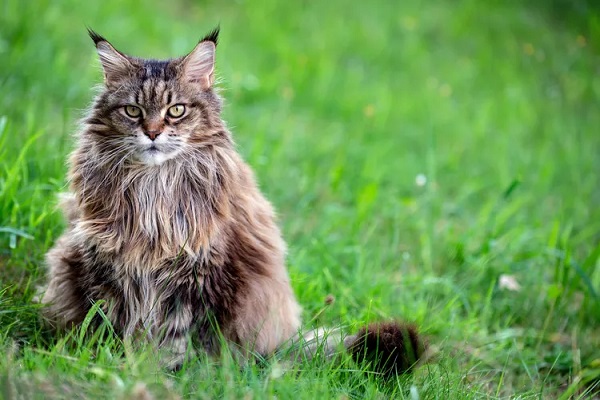
Siberian cats are affectionate, playful, immensely fluffy thanks to a semi-long-haired coat cut out for subarctic temperatures, and thought to be hypoallergenic. That last trait is an important one for folks who sniffle and sneeze around most felines.
Siberians are often called the “cat for dog people” because they tend to follow their humans around the house and come when called. The downside? These coveted cat qualities can come at a hefty price. Demand is higher than supply in the U.S., so prepare to pay thousands.
In this article we will be discussing their personalities, hardiness, shedding, cost, and hypoallergenic reputation.
Basics of a Siberian Cat
Siberian cats, known as Russia’s native forest cats, come from the frigid north. They have triple-layered semi-long coats composed of water-resistant guard, awn, and downy hair. They are one of the larger breeds of house cat, with males weighing up to 20 pounds and standing almost a foot tall.
Siberians reach maturity around age 5 and live up to 15 years. They come in several colors and patterns, from solid to tortoiseshell to colorpoint. Tabbies are perhaps the most common.
This breed of cat may also be called Siberian forest cats or Moscow longhairs.
Are Siberian Cats Hypoallergenic?
One of the main draws of this decidedly expensive, relatively rare cat breed is that it’s supposedly hypoallergenic. This is different for a long-haired cat, as hair carries the protein most associated with allergic reactions—hence why most “hypoallergenic” cat breeds are short-haired or hairless.
No cat—or dog, for that matter—is 100% hypoallergenic, but Siberians can rightfully be called low-allergen because of mutations that bring down their Fel d 1 levels. Fel d 1 is the most major of 10 cat allergens.
Do Siberian Cats Shed?
With hair suited for subarctic Siberia, it’s no surprise these fluffballs shed. Though they’re said to shed less than cats with similar hair, households with Siberians can expect molting to occur twice a year, in spring and fall. Spring molting is the heavier of the two because the winter coat is longer and heavier.
SEE ALSO: 20 Unbelievable Facts About Animals
It’s long been assumed that the more a cat sheds, the more allergenic it is. This isn’t necessarily the case. Allergens come from cats’ salivary and sebaceous (skin) glands, not their hair. Hair is merely a carrier, and as with Siberians, it won’t cause allergies if it contains only low levels of allergy-causing proteins.
Siberian Cat Personality
“Siberian cats are very personable and want to be near their owners,” the Cat Fancier’s Association says. “They enjoy the company of children, dogs, and other animals. They are fearless and easygoing. Not much disturbs their natural calm and equanimity.”
These cats are often compared with dogs because of their human companionship. Siberian owners say they spend much of their lives in a kitten-like state, perpetually playful and adventurous. With longer hind legs than forelegs, they’re known to be athletic jumpers.
Siberian cats are great companions to adult humans and get along well with kids and dogs. They are generally quiet but don’t mind noise in the house. According to the Cat Fancier’s Association, they communicate with “mews, trills, chirps, and lots of purring.”
Common Health Issues
Another benefit to cohabitation with a Siberian cat is that they’re some of the hardiest cats out there. Sure, they’re expensive, but they could save you a load in veterinary costs down the road.
Think about it: This hearty cat has spent hundreds of years developing strong genes in a hostile environment. In Russia, where they’re a prized breed, they’re more than just pretty cats. They have had a practical role as mousers as well.
The one thing Siberian caretakers should look out for is hypertrophic cardiomyopathy (aka HCM), which is the most commonly diagnosed cardiac disease in cats. HCM causes the walls of the heart to thicken, potentially leading to obstruction of blood to the heart. Siberians can be screened for this disease as kittens.
Siberian Cat Price
There are many benefits to adopting a Siberian cat—so many benefits, in fact, that these cats are in high demand and can be hard to come by outside of breeding networks. They cost, on average, $1,200 to $2,500 but can be as much as $4,000 depending on the pedigree.
Siberians are so rare that they don’t often crop up in shelters; however, you could perhaps find one to rescue through special organizations like the nonprofit Siberian Cat Rescue Group based in Texas.



